Key Takeaways:
- Outdoor cat houses can provide warmth and protection for cats during cold weather if properly insulated and maintained.
- Providing food, water, and additional heating elements like microwavable heating pads can help outdoor cats retain body heat.
- Regular maintenance of outdoor shelters is crucial to ensure they remain dry and warm throughout the winter months.
Caring for outdoor cats, whether they are community cats, feral cats, or your own pet cats, requires special considerations, especially when temperatures drop. One of the most pressing questions for cat caretakers is: do outdoor cat houses keep cats warm?
This article will delve into the effectiveness of outdoor cat shelters in keeping cats safe and warm, and what additional measures can be taken to protect these animals during the cold months.
Understanding the Needs of Outdoor Cats
Outdoor cats, including feral and stray cats, face numerous challenges during the colder months. Unlike indoor cats, they do not have the luxury of a constant warm environment.
Adequate shelter is essential for these cats to survive and stay healthy when the cold air sets in. But what constitutes adequate shelter, and how can it ensure cats stay warm?
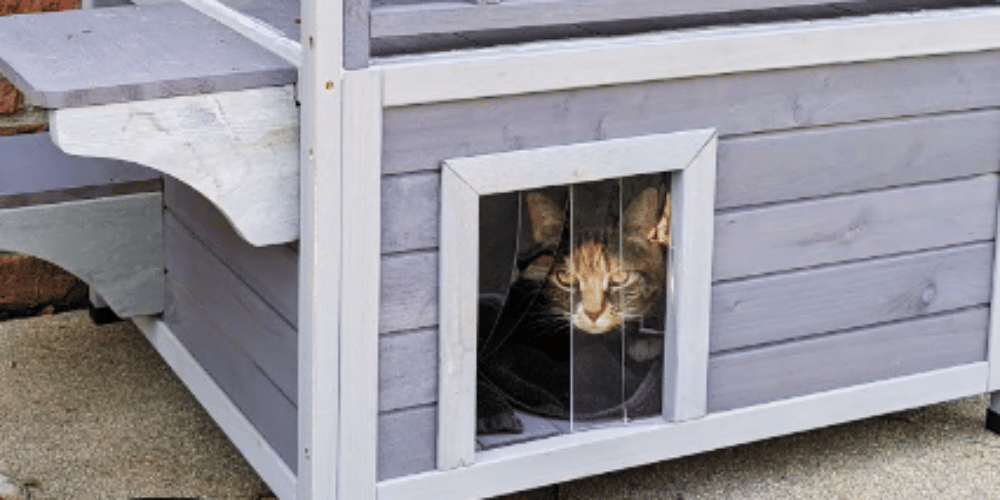
The Basics of Outdoor Cat Shelters
Outdoor cat shelters are designed to offer protection from the elements and help retain the cat's body heat. A well-constructed shelter can be a warm place for outdoor cats to escape the extreme cold.
However, not all shelters are created equal, and understanding the features that make a shelter effective is key to keeping outdoor cats safe.
Insulation: The Key to Warmth
Insulation is crucial in preventing cold air from penetrating the shelter and the cat's body heat from escaping. Materials like straw bedding, mylar blankets, and insulating material can be used to line the interior of the shelter, creating a barrier against the cold.
Shelter Placement and Protection
The location of outdoor cat shelters can significantly affect their warmth. Placing shelters off the ground level, away from prevailing winds, and ensuring they are waterproof are all strategies to enhance warmth.
Additionally, shelters should be positioned where they can easily pop out of sight to protect cats from predators.
The Role of Bedding Materials
Straw bedding is often recommended over materials like folded newspaper or shredded newspaper, as straw does not retain moisture and provides better insulation. It's important to avoid materials that can compact or become moldy, as these can lead to health issues for the cats.
Maintenance is Crucial
Shelters regularly need to be checked to ensure they remain dry and free from drafts. Wet or frozen bedding should be replaced immediately. During the winter months, snow and ice accumulation should be cleared from the shelter entrances to prevent blockages.
Feeding for Warmth
Feeding stations near the shelters can encourage cats to stay close to their warm place. Providing wet food, which requires more energy to digest, can help cats generate more body heat. However, in freezing temperatures, wet food can quickly freeze, so dry food may be a more practical option.
Water: Preventing Dehydration and Freezing
Fresh water is just as important as cat food. Using heated water dishes can prevent water from freezing, and avoiding metal bowls can prevent tongues from sticking to the surface. It's essential to check water bowls regularly to ensure cats have access to fresh water and not frozen water.
The Benefits of Heated Water Dishes for Feral Cats
Outdoor cats, especially feral ones, face the challenge of finding liquid water during freezing temperatures. A heated water dish can be a game-changer in such conditions. By keeping the water from freezing, these dishes ensure that cats can stay hydrated without expending precious energy to melt snow.
This is particularly important as dehydration can be as life-threatening as the cold itself. Moreover, a consistent water source can help maintain a cat's body heat, as their system isn't overtaxed by trying to warm up ingested snow or ice.
Heated water dishes are designed to be safe and energy-efficient. They often come with thermostats to regulate temperature and are made from chew-resistant materials to prevent any accidents.
For those caring for feral cats, placing a heated water dish near the cats' shelters can significantly improve their quality of life. It's a simple addition that can have a profound impact, ensuring that the cats have access to the water they need to survive and thrive in the harsh winter months.
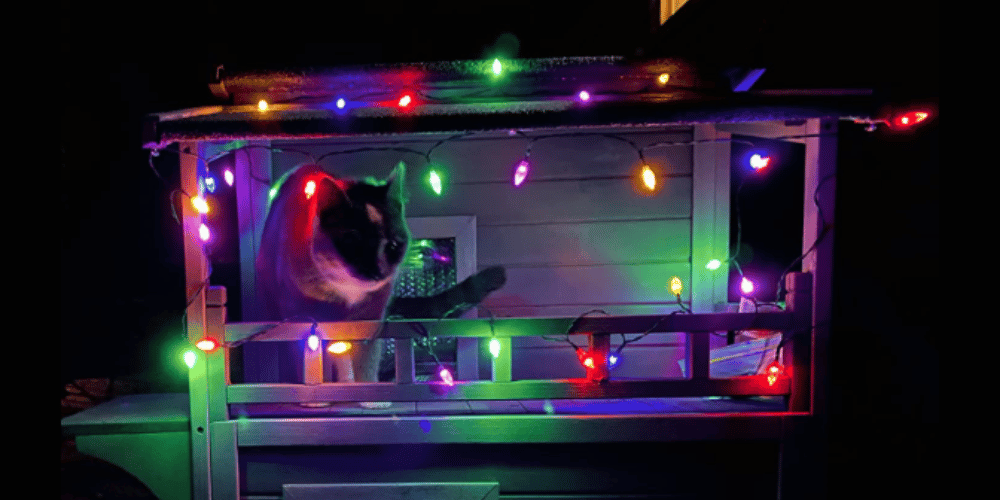
The Significance of Feral Cat Winter Care
Caring for feral cats during the winter months is not only an act of kindness but also a practical approach to maintaining their health and well-being. When temperatures drop, a feral cat's body heat becomes a precious commodity that must be preserved.
By providing insulated cats shelters, we help these independent felines conserve their body heat, ensuring they have a fighting chance against the harsh cold. These shelters act as a haven where the cat's own body heat is used to create a warm microenvironment, crucial for their survival.
Moreover, the presence of a reliable shelter can reduce the energy a feral cat expends in search of a warm spot, allowing them to allocate more resources towards their immune function and overall health. This is particularly important in feral colonies, where the spread of disease can be rapid and devastating.
By investing in the construction or purchase of a well-insulated shelter, we contribute to the health and longevity of these often-overlooked community members.
The Science of Cat's Body Heat Retention
Outdoor cat houses are not just shelters from the wind and rain; they are crucial in aiding a cat's body heat retention. Cats are adept at conserving their own body heat, but during the colder months, they need all the help they can get.
A well-insulated shelter allows a cat to maintain its body temperature by trapping the heat generated from its body. This is particularly important at night when temperatures drop significantly. The design of the cat house should, therefore, facilitate the retention of the cat's body heat, with small entrances and cozy spaces that prevent the warmth from escaping.
Moreover, the materials used in the construction of the shelter play a significant role in heat retention. Some materials have better insulating properties than others, helping to keep the interior of the cat house warm.
For instance, shelters lined with Mylar or straw can effectively reflect a cat's body heat back towards them, creating a warmer environment. It's essential to choose materials that are not only good insulators but also safe and non-toxic for the cats.
The Impact of a Cat's Food on Their Warmth
Feeding is an often overlooked aspect of keeping outdoor cats warm. The calories in a cat's food are like fuel for their internal furnace. During winter, outdoor cats require more energy to maintain their body heat, making it essential to provide them with high-calorie and nutritious food.
A diet rich in proteins and fats helps cats generate more body heat and maintain their energy levels. This is why it's crucial to adjust the feeding schedules and the quantity of food provided to outdoor cats during colder months.
Creating a feeding station near the cat's own shelter can also encourage regular eating habits, which is vital for their warmth and overall health. The station should be protected from the elements and predators to ensure the cats feel safe while eating.
By providing a steady supply of the right kind of cat's food, caregivers can significantly impact the well-being of outdoor cats, helping them to stay warm and healthy throughout the winter season.
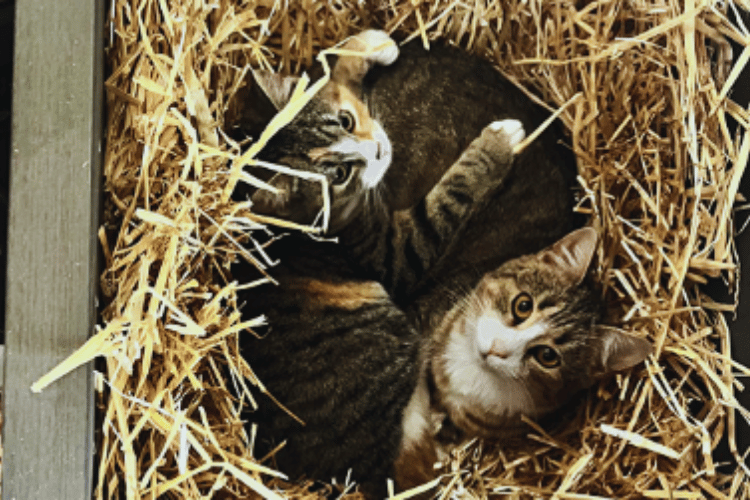
Winter Hydration Strategies for Feral Cats
Hydration is a critical aspect of feral cat care, especially in winter. A common challenge is ensuring that their water bowl doesn't freeze, leaving them without access to liquid water.
One effective solution is the use of heated water dishes, which are designed to keep water at a drinkable temperature, even in freezing conditions. These dishes are a lifeline for feral cats, preventing dehydration, which can be just as dangerous in the winter as in the summer months.
Additionally, it's important to clear snow away from the water sources regularly. Snow can be a deceptive barrier, preventing cats from reaching their water bowl or misleading them into eating snow for hydration, which can lower their core body temperature and lead to hypothermia.
By keeping the area around their water source clear, caregivers ensure that feral cats have uninterrupted access to the water they desperately need to stay hydrated and healthy throughout the winter season.
The Advantages of Providing Food Stations for Outdoor Cats
Feeding stations are an essential component of caring for feral cats who live outdoors. By establishing a designated area to provide food, caregivers can help maintain the health and welfare of these animals.
Canned food, in particular, can be beneficial as it has a high moisture content, which is crucial during the winter when water sources can be scarce. Additionally, the extra calories in canned food can help feral cats generate and retain more of their body heat, which is vital for surviving cold nights.
When setting up a feeding station, it's important to keep it well-maintained and protected from the elements. A half-covered structure can shield the food from snow and rain, while still allowing easy access for the cats. Regularly clearing snow and ensuring the food is fresh and unfrozen will encourage the cats to return and utilize the station.
For those who are unable to provide a constant supply of fresh food, a microwavable heating pad placed under the food dishes can help keep the food from freezing for a longer period, making it easier for cats to eat and digest.
Enhancing Warmth with Heat Sources
For those particularly cold nights, additional heat sources can be a lifesaver. Microwavable heating pads or even simple DIY solutions like packing peanuts can add extra warmth to a cat's shelter. However, safety should always be a priority to prevent fire hazards or allergic reactions.
The Importance of Multiple Shelters
Having more than one shelter can be beneficial, especially if there are multiple cats. Two shelters can provide options for cats to find the warmest spot, and they can also share body heat. However, overcrowding should be avoided as it can lead to stress and disease transmission.
The Trap Neuter Return (TNR) Connection
TNR programs not only help control the population of community cats but also ensure that cats are healthier and better equipped to handle cold weather conditions. Neutered cats require less energy to maintain their body heat and are more likely to use the shelters provided.
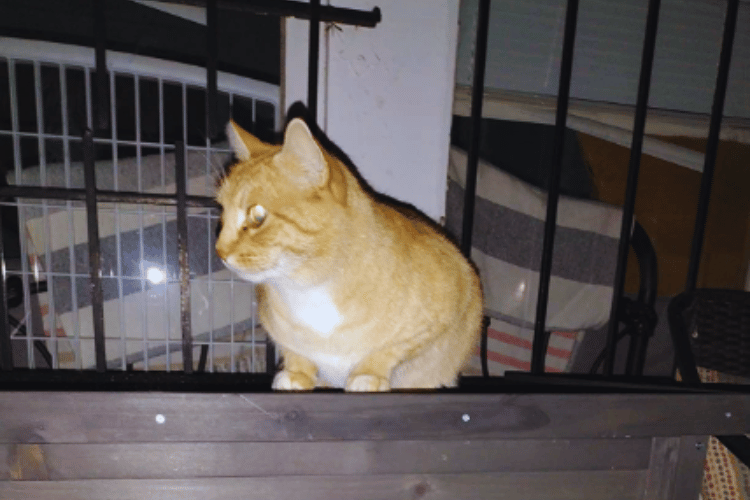
Community Efforts in Keeping Outdoor Cats Warm
Community involvement is essential in keeping outdoor cats safe during the colder months. From providing food and water to building and maintaining shelters, community efforts can make a significant difference in the lives of these animals.
The Dangers of Improvised Solutions
While it may be tempting to use whatever materials are on hand, some can be a bad idea. For example, duct tape may not hold up to outdoor use, and certain insulating materials can be harmful if ingested. It's important to research and use materials that are safe and effective for cat shelters.
Weatherproofing for Longevity
To ensure that outdoor cat shelters last through the colder months and beyond, weatherproofing is essential. This can include using materials that are resistant to moisture, reinforcing the structure to withstand weather conditions, and checking the shelters regularly for any needed repairs.
Special Considerations for Kittens and Elderly Cats
Kittens and elderly cats have different needs when it comes to staying warm. They may require more energy to maintain their body temperature and can benefit from additional heat sources and more frequent feeding.
The Role of Shelter Design
The design of an outdoor cat shelter can greatly impact its ability to keep cats warm. Features like double-walled construction, proper ventilation to prevent condensation, and a small entrance to minimize cold air influx can all contribute to a warmer shelter.
Summary
Outdoor cat houses can indeed keep cats warm if they are properly designed, insulated, and maintained. Key elements such as straw bedding, mylar blankets, and the strategic placement of shelters play a significant role in retaining a cat's body heat.
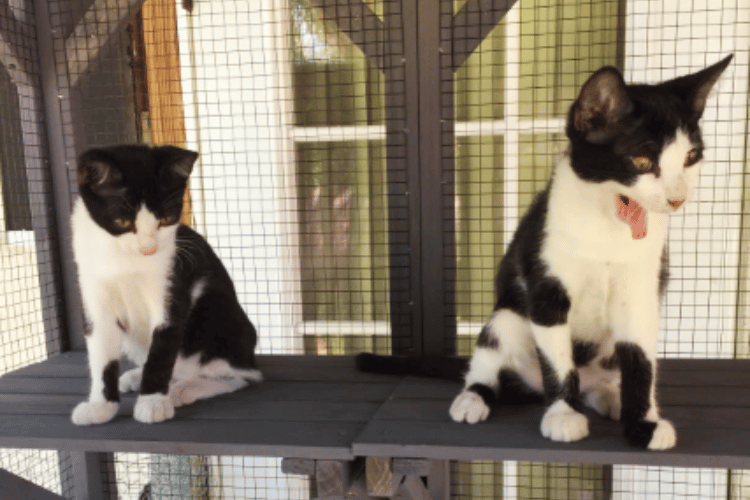
Regular maintenance to ensure shelters are dry and free from drafts, along with providing adequate food and water, are essential practices during the winter months. Community involvement and TNR programs also contribute to the overall well-being of outdoor cats in cold weather. By understanding and implementing these measures, caretakers can make a substantial difference in the lives of outdoor cats.
FAQ Section
How often should outdoor cat shelters be checked and maintained?
Outdoor cat shelters should be checked and maintained regularly, especially during extreme cold or wet weather conditions. Bedding should be replaced if it becomes wet or frozen, and snow should be cleared from the entrances.
Can I use blankets or towels for insulation in cat shelters?
Blankets and towels are not recommended for outdoor cat shelters as they can retain moisture and lead to mold or mildew. Straw is a better option as it does not hold moisture and provides better insulation.
Is it safe to use electric heating elements in outdoor cat shelters?
Electric heating elements can pose a fire hazard and should be used with caution. If you choose to use them, ensure they are specifically designed for outdoor use and are placed where cats cannot chew on cords. Safer alternatives include microwavable heating pads or self-warming pet beds.
Thank you for visiting LegitLists we hope this helps you make a legitimate choice!






